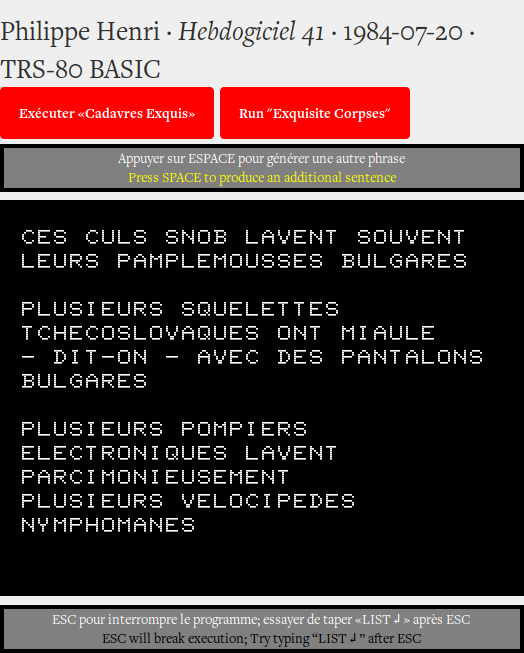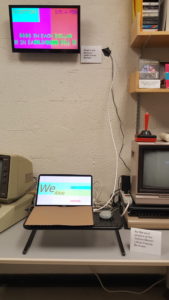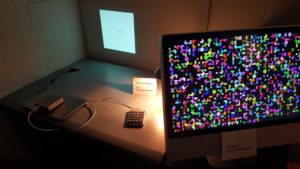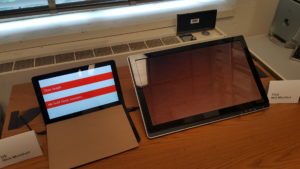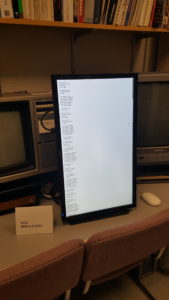New York City, we are continually told, is now the “epicenter” of the COVID-19 pandemic in the United States. Italy is the world’s “epicenter.” This term is used all the time in the news and was recently deployed by our mayor here in NYC.
I’m following up on a February 15 Language Log post by Mark Liberman about why this term is being used in this way. Rather than asking why people are using the term, I’m going to discuss how this word influences our thinking. “Epicenter” leads us to think about the current global pandemic in some unhelpful ways. Although less exciting, simply saying something like “New York City has the worst outbreak” would actually improve our conceptual understanding of this crisis.
“Epicenter” (on the center) literally means the point on the surface of the earth nearest to the focus of a (below-ground) earthquake. It can be used figuratively — Sam did not keep the apartment very tidy; Upon entering the kitchen, we found that it was the epicenter — but there’s only the one literal meaning.
One effect of the term is a sort of morphological pun: There’s a COVID-19 “epi-center” because this is an “epi-demic,” a disease which is “on the people.” But on March 11, the World Health Organization said that COVID-19 is worse than an epidemic, it’s a pandemic. Indeed, it is a global pandemic, spreading everywhere. So what might have been a useful pun back in February is now an understatement.
Beyond that, “epicenter” is metaphorical in the sense of directing us to a particular conceptual metaphor (see George Lakoff and Mark Johnson’s Metaphors We Live By, 1980, and Lakoff’s article “The Contemporary Theory of Metaphor,” 1993). This sort of metaphor is not just a rhetorical figure or flourish, not a surface feature of language like the “epi-” pun. It is a fundamental way of understanding a target domain (the pandemic) in terms of a source domain (an earthquake).
To give this complex metaphorical mapping a name, we can call it A HEALTH DISASTER IS A SEISMOLOGICAL DISASTER or more simply A PANDEMIC IS AN EARTHQUAKE. But these are just names; we’d need to explore what is being mapped from our earthquake-schema to our pandemic-schema to really think about what’s going on there.
I will note that this metaphor usefully emphasizes some things about the pandemic: its unexpected onset, the extensive devastation, and the cost to human life. While such mappings are always incomplete, if we try to make a more extensive mapping, we can find ourselves more confused than helped.
Earthquakes are localized to a certain place (unlike a global pandemic) and they occur during a short period of time (unlike a global pandemic). So the metaphor incorrectly suggests that our current disaster is happening once, in one place, and thus we will be able to clean up from this localized, short-term event with appropriate disaster relief.
The most critical aspect of our current crisis is not part of the earthquake metaphor at all. There is no entailment or suggestion from the earthquake metaphor that we are dealing with something that can be transmitted or is communicable. Instead of rallying to an earthquake meeting point, we now need to remain apart from each other to slow the spread of disease.
I’d going to go even deeper in thinking about the “epicenter” concept. Why does a global pandemic (a disease affecting “all the people”) have any sort of center at all?
Metaphor, as it is now understood, is based on ways of thinking that are grounded in bodily experience, including those cognitive structures called image schemas. One of these, detailed by Mark Johnson in The Body in the Mind, 1987 and also discussed by George Lakoff in Women, Fire, and Dangerous Things, 1987, is the CENTER-PERIPHERY image schema. It relates to body, and our recognition of the heart, for instance, as being central and one of our toes as being more peripheral. We worry less if we’ve cut a toe than if we’ve cut our heart. Even if lose a toe, we can keep living, which we can’t do without our heart.
So, since this pandemic has one or more CENTERS, does that mean that it’s not so important to worry about the PERIPHERIES of COVID-19? Do we need to be concerned about the center but, if we are somewhere on the margins, is it okay to have parties or get into other situations that may foster transmission of the virus? Is that the way to think about a global pandemic, where outbreaks are occurring everywhere? Obviously, I feel that it’s not best.
The alternative image schemas we can use to develop alternative metaphors are CONTAINMENT and LINER SCALE. “Outbreak” is pretty clearly based on the CONTAINMENT image schema. Some places do have outbreaks that are worse and more serious than other places. Hence, LINEAR SCALE. This would mean saying that, for instance:
Italy has the “worst outbreak of the global pandemic”
NYC has the “worst US outbreak of the global pandemic”
These statements indicate that COVID-19 is a global outbreak that must be CONTAINED, and the implication is that it must be contained everywhere. It isn’t something that hits one place at one time, and doesn’t have a CENTER people can simply flee from in order to be safe. It also admits that the various outbreaks around the world are on a SCALE and can be worse in some places, as of course they are.
I shouldn’t need to explain that I have no expertise or background in public health; What I know, and the information I trust, comes from reading official public health sources (the WHO and CDC). It may seem silly to some (even if you’ve read this far) that I’ve gone off at such length about a single word that’s in the current discourse. I’ve bothered to write this because I’m a poet and have been studying metaphor (in the sense of conceptual metaphor) for many years. I believe the metaphors we live by are very important.
In George Lakoff and Mark Turner’s More Than Cool Reason, 1989, they make the case that metaphor is not what it was assumed to be in poetry discussions for many centuries. It is completely different, certainly not restricted to literature, and indeed is central to everyday thinking. However, in their view, the role of poets is extremely important: “Poets are artists of the mind.” They argue that we (poets) can help to influence our culture and open up more productive and powerful ways of thinking about matters of crucial importance, via developing and inflecting metaphors. I believe this, and hope that other poets will, too.










